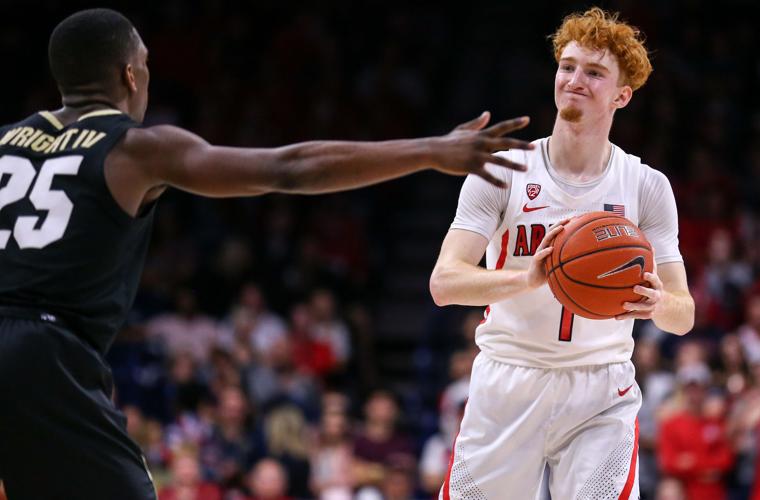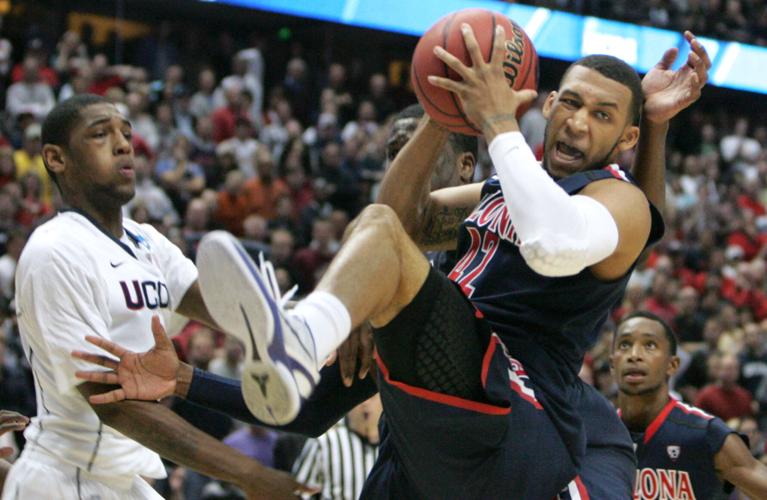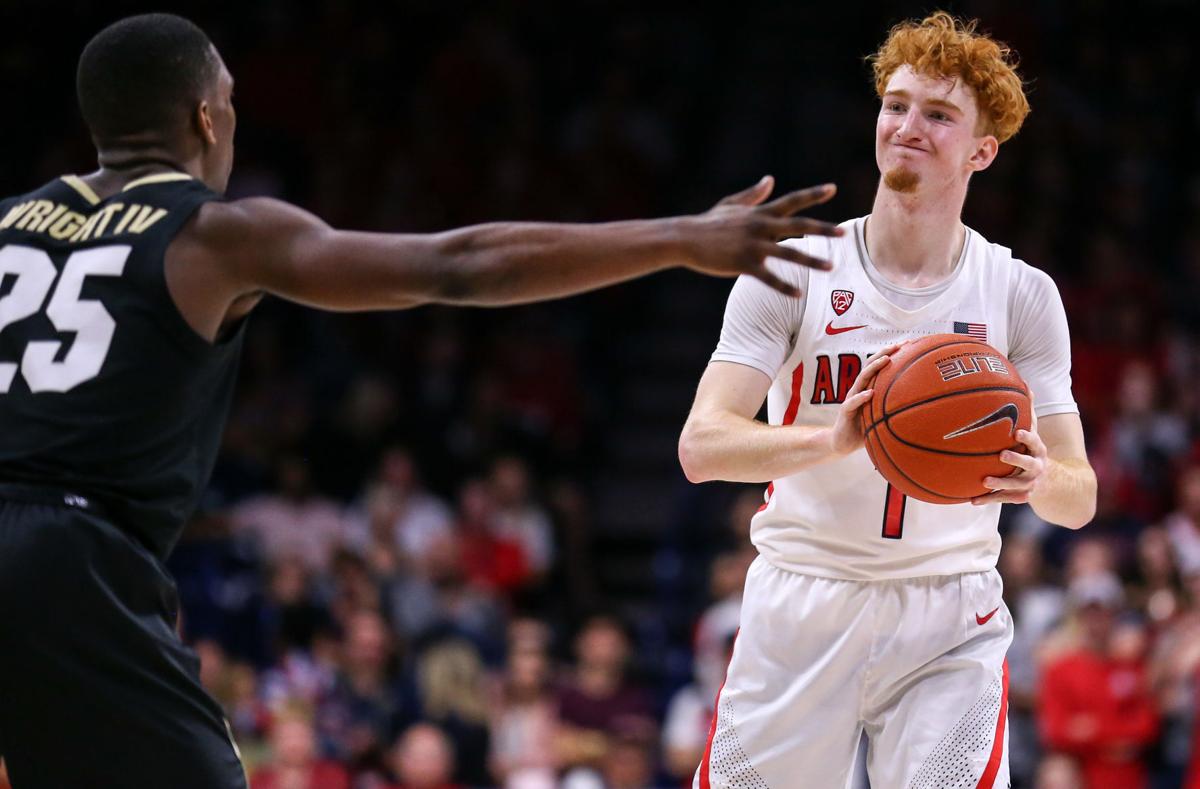Of all the grand basketball victories by Arizona — the Final Fours and Pac-12 championships — there is no singular legend, no shot for the ages, no defining moment, no buzzer-beater that lives on like, say, Chuck Cecil’s 106-yard interception return to win the 1986 Territorial Cup football game.
Remember Jamelle Horne? No one had the opportunity like Horne had as the clock ticked toward 0:00 at the 2011 Elite Eight. Horne’s last-second jumper that would have put Arizona in the Final Four missed by a fraction, a heartbeat from everlasting fame.
Had Horne’s jumper swished, it would be replayed on the center court jumbotron before every game at McKale Center. It would surpass having one’s name in the Ring of Honor.
Instead, Jamelle Horne never played another game for the Wildcats. He played in Poland, Japan, Argentina and for the Panama national team. He even changed his name to Mello Marcedious.
I thought about Horne (or Marcedious) during the NBA draft this week, trying to gain some context as Nico Mannion plunged from a long-ago predicted lottery pick to the bottom of the second round, No. 48 overall, in a year’s time.
He’s not the first basketball prodigy to fall. He won’t be the last who didn’t become an overnight success.
Horne turned 32 this month. He no longer plays in the EuroLeague or for the Sioux Falls Sky Force as he did a year after Arizona’s 2011 Elite Eight loss to UConn. He has moved to Los Angeles and is an aspiring model/actor. He has been featured in several McDonald’s commercials and others for Nike. Horne has played a bit part in several TV shows, including one on the BET network called “Death Row.”
Horne didn’t find fame at Arizona, but he has found perspective. Here is what he posted on his Facebook page after he paused his basketball career:
“Tell me what y’all know about ‘overnight success’ because I truly have no idea what that means. However, I’ve had the opportunity to experience what early success is like, and I’m positive that people often mistake the two.
“Each day you choose to get better eventually adds up to this ‘overnight success’ myth. Daily prayer. Daily grind. Your routine will determine your success.”
Any college basketball player would benefit from absorbing Horne’s words.
He arrived at Arizona in the fall of 2007 much like Mannion showed up on campus in the fall of 2019: a five-star recruit with visions of greatness.

Jamelle Horne grabs a rebound during the second half of Arizona’s Elite Eight game against UConn in 2011. Later, he barely missed a game-winner.
He was ranked the No. 21 overall prospect in the Class of 2007 by Rivals.com, two spaces ahead of Blake Griffin, who has gone on to earn $148 million in the NBA. When rosters for the 2007 McDonald’s All-American game were chosen in 2007, Horne was not picked.
The man who recruited him, UA assistant coach Josh Pastner, said “we’re a little surprised; he’s a top 20 player.”
But that’s not the way it turned out for Horne. He never averaged more than 9.4 points per game playing one year for Kevin O’Neill, another for Russ Pennell, and his final two years for Sean Miller.
Life went on. Horne’s chance to forever be a fabled name in UA basketball history missed by an inch. His NBA dreams went kaput.
Thirteen years after arriving at Arizona as the nation’s No. 21 overall prospect — ASU’s James Harden was No. 11 and UCLA’s Kevin Love was No. 6 — Jamelle Horne/Mello Marcedious created an anthem that every super-duper UA basketball prospect should read — especially Nico Mannion.
In his brief time at Arizona, Mannion was inconsistent. He did not match the expectations that came with being Rivals.com’s No. 12 overall prospect in the Class of 2019. Mannion didn’t make the All-Pac-12 team and was outplayed by ASU’s Remy Martin and Oregon’s Payton Pritchard.
At times Mannion was soft. At times he was a victim of Sean Miller’s unorthodox “Loop” offense, in which Mannion would dribble upcourt, hand the ball to someone on the wing and then run a lap around the defense, arriving back to his original spot, often out of breath.
It wasn’t like his days at Phoenix Pinnacle High School, when he was given the green light to shoot at will, setting records, creating his own offense, winning championships.
The expectations for Mannion were way overblown, as Arizona fans should’ve seen coming from a mile away.
Between 2000-12, Arizona signed nine five-star recruits: Horne, Jason Gardner, Mustafa Shakur, Ndudi Ebi, Jawann McClellan, J.P. Prince, Josiah Turner, Kaleb Tarczewski and Brandon Ashley.
Of those nine, only Ebi — who jumped from high school to the pros — played in an NBA game. Ebi scored just 13 points in the NBA and was out of the league by the time he would’ve been a junior at Arizona.
There were no overnight success stories in that group of Arizona five-star recruits.
This isn’t to suggest Mannion won’t persevere and make a place for himself in the NBA, earn millions and move past an unfulfilling college career. Under Steve Kerr’s command with the Golden State Warriors, Mannion is apt to be part of an offense that is a better fit for his skills. He’ll have time to develop and learn from the best. He won’t have to be The Man, a role that did not suit him at Arizona.
No matter how long he had to wait Wednesday night, being drafted by the Warriors might have been the biggest victory of Mannion’s basketball days.
His career begins now.






